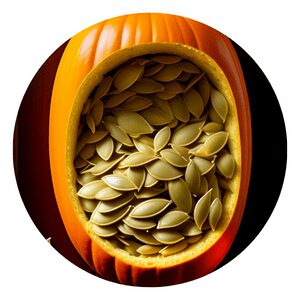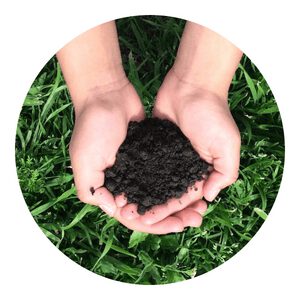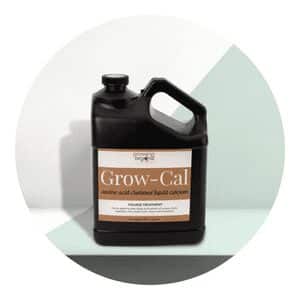How to Plan and Design Your Vegetable Garden for Maximum Yield
Growing your own vegetables can be an incredibly rewarding experience – and a great way to add fresh, healthy produce to your diet.
Whether you’re a gardening novice or an experienced green thumb, the key to successful vegetable gardening is in the planning.
To get the highest yield from your vegetable garden, it’s important to consider factors such as soil type and health, climate, size of plot and types of vegetables.

Plan and Design Menu
The benefits of vegetable gardening
Vegetable gardening is a great way to lead a healthier lifestyle and be more sustainable.
Planning and designing your vegetable garden can help you maximize the yield from your garden.
When planning, it’s important to consider the size, type of vegetables grown, location, soil quality, and water availability.
Location plays an important role in successful vegetable gardening.
Choose a sunny spot with well-draining soil that gets at least 8 hours of direct sunlight each day for best results.
Consider proximity to water sources like rain barrels or access to irrigation systems if you live in a dryer climate or have little rainfall in your area.
Similarly, the quality of soil will also impact the success of your vegetable garden; having nutrient-rich soil with controlled pH levels is key for healthy plants and high yields.
Additionally, drainage is essential since too much standing water can lead to root rot; adding organic matter such as compost improves drainage and helps fertilize the soil.
Finally, it’s important when planning out your vegetable garden design to consider how much space you’ll need for each plant type based on their mature size so that they’re spaced appropriately for air circulation which helps reduce spread of diseases and pests among plants.
Crop rotation techniques should also be employed between seasons so that different families of vegetables are not planted in the same places year after year.
These steps will set you up for success when it comes time for planting!
Gardening needs and goals
Once you have identified the space and size of your vegetable garden, it is time to assess your gardening needs and goals.
Consider what type and amount of vegetables you would like to grow.
First, determine if you are interested in growing food for convenience or just for aesthetic pleasure.
If convenience is your goal, focus on the types of vegetables that don’t need a large area to produce but can be harvested frequently such as lettuce, tomatoes, peppers, Swiss chard and herbs.
On the other hand, if aesthetics are more important than production then choosing plants with interesting foliage or flower color may be best for you.
When selecting specific varieties of each vegetable type consider how much time you have available for harvesting and preserving the harvest.
Some varieties require daily tending while others may only need harvesting once every few weeks.
Also think about how much space each type will take up in order to fit them into your garden plan.
Consider whether or not there are any companion plants that could provide better pollination, pest control or nutrient uptake when grown together with their vegetable counterparts.
Choosing the right location for your vegetable garden
Sunlight is the most important factor to consider when choosing a location for your vegetable garden.
Your vegetables need at least 6-8 hours of direct sunlight each day to grow properly.
If a location does not have enough sunlight, you will have difficulty growing any type of vegetable in that spot.
It’s also important to assess how much shade the area gets throughout the day and if it will be too much for your plants to handle.
Soil quality is another critical element when it comes to selecting an ideal spot for your vegetable garden.
Rich and nutrient-dense soil is necessary for optimal growth and yields of your vegetables; therefore, you should look into what kind of soil is present in the potential site before planting anything.
The best way to test this is by obtaining a soil sample from that area and having it analyzed at a local gardening center or university extension office.
Good drainage is essential as well since waterlogged soil can cause root rot in many types of vegetables, especially those with shallow roots.
You’ll want to make sure that any excess water can easily drain away from the planting site, otherwise all your hard work could be ruined by flooding or pooling of water around the base of the plants after rain showers or heavy watering sessions.
Deciding on the layout and design of your garden
Traditional row planting is a classic way to lay out the design of your vegetable garden.
It consists of creating rows and spacing out each plant or crop evenly in order to maximize sunlight exposure and access for weeding and harvesting.
Another option for designing your garden is raised beds, which are great for areas with poor soil or drainage as they allow you to fill them with nutrient-rich soil mix.
Raised beds also make it easier to control weeds, pests, and diseases since the plants are isolated from other plants in their own bed.
Lastly, container gardening is a great idea if you don’t have much yard space available but still want to grow some vegetables.
Containers come in all different sizes so you can choose one that fits your needs best, plus they’re usually very easy to move around if needed.
Just make sure that whatever container you use has plenty of holes on the bottom so water can drain properly.
Choosing the type of layout and design for your garden will depend on what kind of space you have available as well as which crops you plan on growing.
Preparing your soil for planting
Testing your soil is the first step to preparing it for planting.
You can do this using a soil testing kit from your local gardening center, or by sending a sample to your county extension office for analysis.
This will give you an idea of how acidic or alkaline your soil is, as well as its nutrient content. If the pH levels are off, you can add lime to adjust them up and sulfur to adjust them down.
Adding organic matter is also essential for healthy soil and plants.
Organic matter helps to improve drainage, which prevents waterlogging and root rot in heavy soils, while also helping sandy soils retain moisture more effectively.
Compost is one of the best sources of organic matter; by mixing it into the top few inches of soil before planting you’ll help increase fertility and create a better environment for root growth.
Finally, make sure that the area where you’re planning on planting has good drainage – standing water after rainstorms can cause damage over time due to poor aeration or oxygen exchange between plant roots and their surrounding environment.
Consider adding raised beds if necessary; this way excess water will drain away quickly without affecting nearby plants or other growing areas in your garden.
Design your spring garden with a plan Crop-rotation yields more food than you’d imagine Keep careful watch to catch and remove weeds Overcrowded plants are not what you need Prepare rich soil that is soft and loose To get good yield, vegetables mustn’t be abused Organic compost to help them thrive A well designed garden will sustain your life
Chappy The Gardener
Selecting the right plants for your garden
When selecting the right plants for your garden, it is important to consider a variety of factors.
First, you must take into account the climate of your location.
Different types of plants have different temperature and moisture requirements that must be met in order to ensure their health and productivity.
It is also important to understand your planting zone—the area in which certain plants are known to thrive—in order to make sure you select varieties that will do well in your specific region.
Additionally, make sure you match your planting season with the life cycles of the crops you are looking at planting.
Many vegetables need a long growing season in order for them to reach their full maturity before the first frost arrives.
Knowing when these crops should be planted will help ensure successful yields come harvest time.
Spacing your plants to optimize growth and yield
Properly spacing your plants is an essential part of maximizing garden yield.
One popular strategy for more efficient use of space is square foot gardening.
This method divides the garden into squares and assigns a specific number of plants to each square, depending on their size.
The goal is to fill the area with as many productive plants as possible without overcrowding them or wasting space.
It also allows you to easily create plant combinations that work well together – such as companion planting – in order to boost growth, reduce pests, and improve soil health.
Additionally, proper spacing helps ensure that each plant gets enough sunlight and water for optimal growth, while preventing competition between neighboring plants for resources like nutrients from the soil.
To achieve this efficiently in a vegetable garden, it’s important to understand what types of vegetables need more or less space between them and adhere closely to those recommendations when planting each variety.
You can also experiment with different plant groupings so that taller or shading varieties can be placed towards the back or sides of the plot where they won’t block smaller varieties from receiving adequate light exposure.
Providing proper nutrition and water for your plants
Fertilization is a key component of providing proper nutrition and water for your plants.
When designing a vegetable garden, consider the type of soil you have in order to determine which fertilizers to use.
Organic fertilizers are preferable, as they provide nutrients over time rather than all at once and are environmentally friendly.
A balanced fertilizer that contains nitrogen, phosphorus, and potassium should be used every two months during the growing season–check labels for exact amounts.
Irrigation is another important factor when planning your vegetable garden layout.
Too little or too much water can damage plants.
Install drip irrigation systems or soaker hoses to ensure precise watering amounts based on plant needs.
Consider the size of your garden when calculating the amount of water needed for optimum growth; deeper watering less often is more effective than lighter frequent watering which does not penetrate deep enough into the soil where roots can access it.
Pest control is also an important consideration when creating a vegetable garden plan; cultural controls such as crop rotation, companion planting and mulching help keep bugs away from plants without using harmful pesticides.
Additionally, handpicking pests off leaves is an option but requires vigilance; be sure to wear protective clothing if dealing with any potentially hazardous insects such as ticks or ants!
Maintaining your garden throughout the growing season
Pruning your vegetable plants can help increase yields by keeping the plant healthy and allowing it to focus its energy on producing fruit rather than growing unnecessary leaves and stems.
Pruning should be done early in the season when the plant is young, with subsequent pruning every few weeks to keep up with growth.
Prune off any dead or damaged branches and cut back side shoots on tomato plants to prevent overcrowding.
Staking is an important part of maintaining a vegetable garden as it provides support for heavy fruits and keeps them from touching the ground, reducing chances of rot or diseases.
Stakes should be placed near the base of each plant, not too far away so that they don’t interfere with weeding or other maintenance tasks.
Securely attach string along each stake for maximum support as plants grow larger throughout the season.
Harvesting vegetables at their peak ripeness will ensure maximum flavor and nutrition from your crops.
Monitor your veggies closely as they start to mature so you can pick them at just the right time; some crops like zucchini may need daily harvesting while others such as peppers may take several weeks.
For best results, use sharp garden scissors when harvesting so you don’t pull up any roots or damage delicate stems in the process.
Planning for crop rotation and succession planting
Crop rotation and succession planting are essential practices to ensure your garden remains productive over multiple seasons.
Crop rotation helps reduce soil-borne diseases, build fertility, improve weed control, and maintain soil structure. Succession planting is a method of staggering the harvest of vegetables by making successive sowings at 3-4 week intervals throughout the season.
When planning for crop rotation, it’s important to select crops from different plant families with different root structures and nutrient requirements that won’t deplete the same nutrients from your soil year after year.
Planting members of the same family in a four-year cycle is ideal for increasing productivity as well as preventing crop loss due to pests and diseases common within specific plant groups.
For example, you could plant potatoes one season followed by legumes such as beans or peas the following season, followed by root vegetables such as carrots or beets the next season and then brassicas like broccoli or cauliflower afterwards.
Succession planting provides an extended harvest period while reducing pest pressure on individual crops since they don’t remain in place for long periods of time.
It also allows you to take advantage of cooler spring temperatures when starting seedlings outside earlier than usual or overwintering cold tolerant crops such as kale before transitioning them to warmer temperatures later in summer when heat loving plants can thrive.
Preserving and storing your harvest for long-term use
Canning your vegetables is a great way to preserve them for long-term use.
It involves heating the vegetables at a high temperature in an airtight container, which prevents bacteria from growing and keeps the food safe.
Once the canning process has been completed, the canned food will last for several years without any loss of flavor or texture.
Canning your harvest also allows you to store it in smaller batches, making it easier to keep track of what has been preserved and how much is left.
Freezing your harvest is another effective way to preserve food for long-term storage.
This method ensures that all of the vitamins, minerals and nutrients are kept intact since freezing does not destroy them like other preservation methods do.
To freeze vegetables properly, make sure they are completely dry before packaging them up for storage; moisture can lead to freezer burn and reduce their shelf life significantly.
Finally, drying your vegetables is one of the oldest methods of preserving food and has been used since ancient times.
It works by removing moisture from the produce until all that remains is a crunchy chip or powdery dust — perfect for adding flavor when cooking meals with fresh ingredients isn’t possible.
To get started with this method, wash and cut up your vegetables before leaving them out in direct sunlight or using a dehydrator machine indoors until they reach desired levels of crispness.
In conclusion, planning and designing your vegetable garden for maximum yield can be an enjoyable experience.
With proper planning and design, you can achieve a successful harvest each year.
Take these steps to plan and design your vegetable garden in order to get the most out of it: determine location, select types of vegetables, choose spacing and planting methods, decide on irrigation needs, and consider pest control options.
Doing so will help you have a more fruitful vegetable garden that yields much more than expected.
Click To Grow
Helps Us Grow – Share If You Like




















